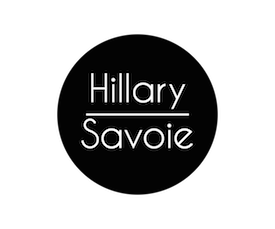
Yesterday a post I wrote appeared on the Boston Children’s Hospital Blog Thriving. The post was about Mother’s Day.
As I worked on the post I dug through old photos from Esmé’s hospital stay around my first Mother’s Day, and I had a somewhat startling visceral response to what I found. Have you ever looked a photograph you took and, as a result, understood an experience in an entirely new way? Well. That is what happened for me.
I never like to look at the photos of that hospital stay. They make me feel queasy. But I dug out the photos because I knew Lisa, the editor, would want them for the piece. And, frankly, I wanted to jog my memory a bit–to remember which tubes were connected to her that day, what blanket I wrapped her in, and so on.
The photos were even more absurd than I remembered.
As I looked through them I could recall how uncomfortable I felt documenting Esmé there, in that room. I didn’t take any pictures of her when she was ventilated–it was as if doing so would accept the reality of her, there, not breathing on her own. I can remember taking photos after she was off of the vent, looking at them on my phone, and deleting them immediately because of how horrifying what I saw was–Esmé’s gray skin, the greenish tinge of the lighting, the sterile feeling you could almost taste through the screen.
The pictures made the whole experience all too real… But, at the same time, I also felt a compulsion to try and document what what happening–because I am me. Because I understood that this would be a defining time in my daughter’s life, and my own. Because, honestly, I was still afraid she would die and this would be the last I would have of her.
So I guess I found some surreal middle ground. Because the photos I kept? They all have these ridiculous filters on them–from an old app. Somehow, I suppose, that made the whole thing less real…like it was a dream.
The evidence:
I did not share these photos at the time–as I do now with so many photos of Esmé–on social media. In fact, I read through my old facebook timeline last week and found none of the details I provide as a matter of course these days–it is almost all abstraction…quotes that I can remember selecting because they meant something to me in the moment. I can’t even find if I wrote the words “Esmé is in the hospital.” At the time I had not yet started making the connections I have made with other parents of children who are medically fragile–I had not found my voice as her storyteller, her advocate, her public cheerleader. Over the next months and years that voice would evolve. It would get stronger, louder, more honest.
But, as I looked through these photos I started to realize that while my words have played such an instrumental role in the way I love and care for Esmé in a kind of universal sense, the photographs of her are also such an important part of how I communicate about her. With time and the eventual establishment of the foundation, documenting Esmé’s life has become a much more public affair than it is with most children. Esmé has her life on display in an unusual way–and my life as her mother, too, is on display. Not only do I write in detail about our experiences, but she has been photographed by some incredibly talented photographers, including Brent Stirton, Rick Guidotti, Tracey Buyce…photographers whose imagery has helped carry messages about Esmé and the important work that serves populations of children with rare and undiagnosed diseases.
And she is photographed by me in all manner of moments in her life–not that I have anything going for me in that sense, besides simple access to an interesting subject that I know very well.
A photograph can go so far in conveying something that I might never be able to triangulate with my words…A good picture has everything to do with understanding a moment in time with Esmé as a larger message about her. As I photograph her, I fixate on trying to capture a particular expression or motion…trying to get at something essential that I can see in her. I suppose there is something about parenting that makes so many of us go wild with documenting each and every stage of a child’s progress–hoping to preserve a perfect record of our children’s growth. But for me, like writing about Esmé, photographing her–and sharing photographs of her–also serves a goal. It is a service of truth and honesty: an effort to communicate larger ideas about children with disabilities.
It has taken time to embrace it…but I can see now that in photographing her, sharing her in this way, I am trying to capture the thing I was afraid to see on my screen in the PICU…not a perfect picture, but an honest one: The one I was afraid to take, or afraid to keep, because it was worth a thousand terrifying words.
Not a perfect picture, but an honest one...worth a thousand terrifying wordsClick To Tweet









Wonderful post. I struggle with the same issue, taking pictures of all the hard things that happen with my son's epilepsy…the hospital stays, the tests, the seizures, the pain and the struggle, but also the triumphs, and the smiles. "Not a perfect picture, but an honest one." Exactly.
I always feel like other people think I am weird when they see me taking pictures of my daughter in the hospital, especially right after surgery… But it seems so natural to me. It's part of her life! And it's very encouraging to look back and see how far she has come… She's not that skinny little girl with an oxygen mask now!
Also I love the picture of Esmé at the end of your Boston children's post… I have dark hair too and pictures of her always remind me of old pictures of myself 🙂
Thank you for sharing the message. Such a difficult one but so helpful to so many. You are courageous and she is lucky to have you just as you are lucky to have her.
Thank you! It is so hard to know what we should and shouldn't document…and it is such a personal balance to strike.
I totally understand MamaV…I wish I had been more ok with it sooner!
Oh! That is so sweet!
Emily, that is spot on! We are very lucky to have each other, she and I!
When my kid was in the pediatric intensive care unit the nurses made her a diary, documenting what had happened and what treatment she was given. It is written in a way that (older) children will understand it. Each nurse wrote a personal page and posted a picture or two. I am so thankful that this was part of their job! My kid is way too young to remember any of it, but it is a huge part of her history after all.